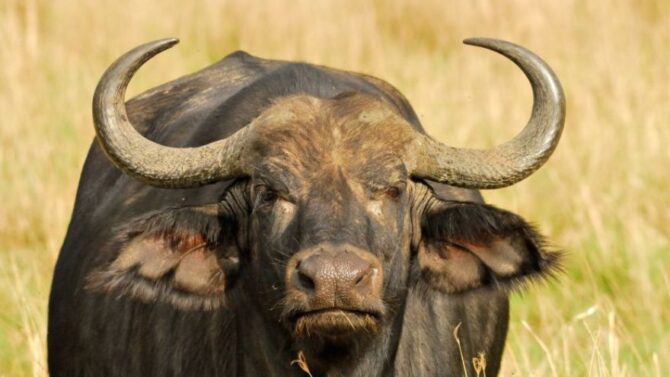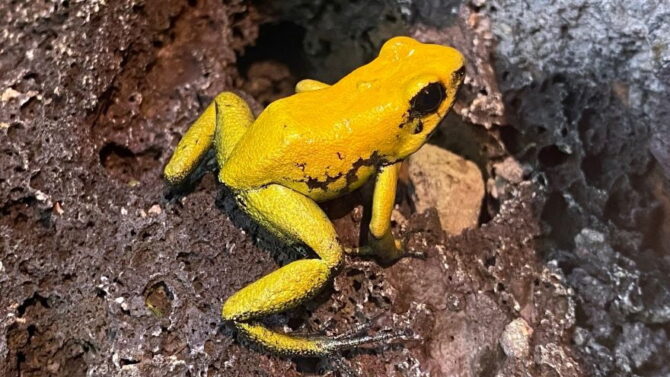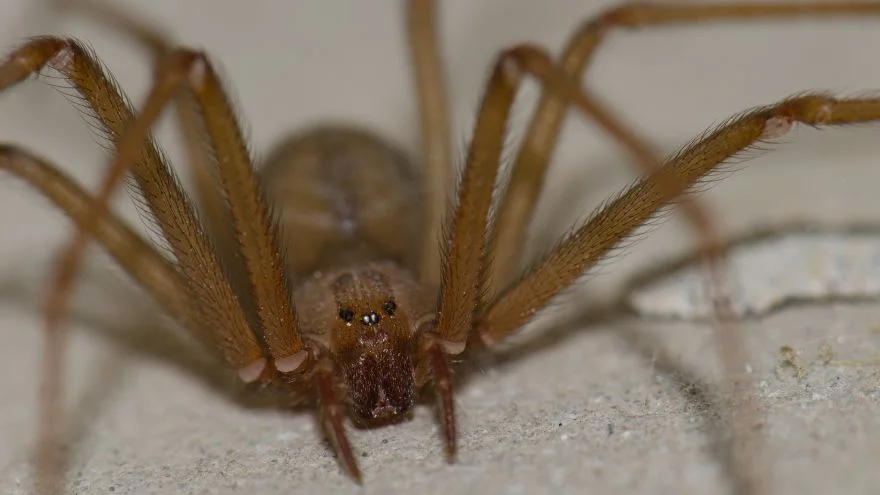Colombia is home to unique stunning wildlife that inspires wonders and awe.
However, some of these wonderful creatures in the South American country are not so friendly.
The most dangerous animals in Colombia include jaguars, bullet ants, poison darts, venomous snakes, and more. They can be deadly to humans when they feel threatened and it is best to avoid them.
Let’s scour through the dense forests, plains, oceans, and corners of the country to present the deadliest animals in Colombia and important wildlife safety tips you need to know.
What are the Most Dangerous Animals in Colombia?
1. Jaguars

- Scientific Name: Panthera onca
- Classification: Mammal
- Habitat: Swamps, thick tropical forest, mangroves, lowland river valleys, arid scrubland
- Diet: Carnivore
- Conservation Status: Near Threatened
By any metric considered, the jaguar is one of the pride of Colombia’s wildlife.
The predator is the largest cat species in the Americas and the third largest in the world.
Though as ferocious as the tiger and lion, the jaguar cannot be mistaken for either, thanks to its yellow fur marked with distinctive rosette markings.
With a single look at this creature, no questions about why the jaguar is dangerous can arise.
The jaguar boasts of excellent predator instincts and has teeth capable of piercing the carapace of turtles and tortoises.
With a single bite on the head of a mammalian prey by a jaguar, the prey will be eliminated.
Add to that their impressive agility and fierceness, and you perfectly understand why the jaguar is feared.
Hence, as you stride through the jungle of Colombia, you must never stray into the territory of these ferocious predators.
2. Poison Dart Frogs
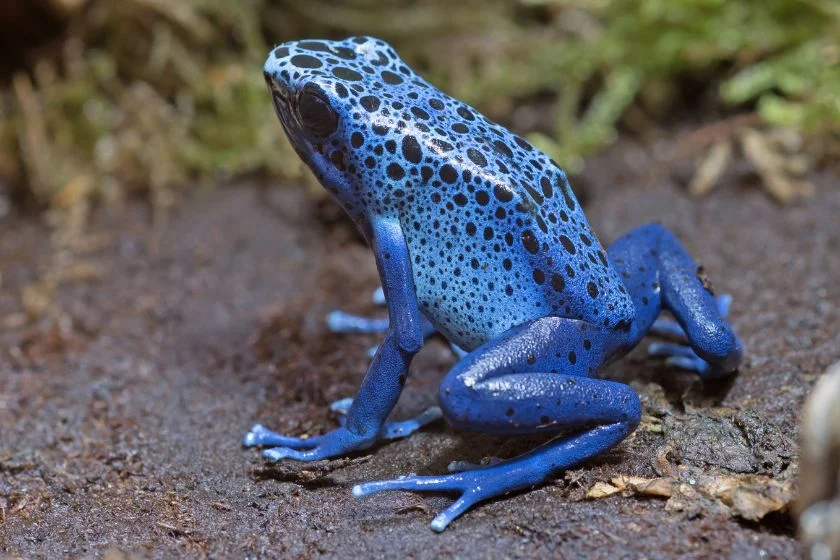
- Scientific Name: Dendrobatidae
- Classification: Amphibians
- Habitat: Tropical rainforest
- Diet: Carnivore
- Conservation Status: Near Threatened
As colorful and attractive as the poison darts frogs may look, they are deadly bags of poison.
These frogs are incredibly deadly as the poison they harbor can kill up to 20 humans with a single touch.
With a single touch of the poison dart, the poison in the frog can trigger involuntary muscle contraction and relaxation, which could lead to heart failure and death.
The venom in poison darts is derived from the numerous insects they consume, so it is best you avoid not just these creatures but areas in which they thrive.
In instances when you feel you have contracted the venoms in these creatures, you should seek medical assistance immediately.
3. Common Lancehead Snake

- Scientific Name: Bothrops atrox
- Classification: Reptiles
- Habitat: Tropical rainforest
- Diet: Carnivore
- Conservation Status: Near Threatened
Extremely deadly, the common lancehead snake goes by numerous monikers such as fer-de-lance, barba amarilla, mapepire balsainand, and equis.
Capable of growing as long as 6 feet, they are pretty easy to identify thanks to the distinctive X pattern scattered over their skin.
With a single bite, these reptiles can discharge enough venom that can lead to blood incoagulability and necrosis, which, if not effectively treated, can result in gangrene and lead to amputation.
The lancehead snake is also dangerous for shooting its poison at victims.
In Colombia, they are by far the most aggressive snake as they account for most snake bites.
Aside from the risk of being bit, their poison can result in painful scratches on the body once it contacts the skin and even worse if it contacts the eyes or open sores.
4. Brazilian Wandering Spider

- Scientific Name: Phoneutria
- Classification: Aranchids
- Habitat: Tropical rainforest
- Diet: Carnivore
- Conservation Status: Least Concern
Known by many names, such as armed spider or banana spider, these creatures are widely known in the forest of Colombia for their nightly hunts and movements.
But what makes them more notorious is the fact that they have a powerful sting.
With a height of 15 centimeters, the Brazilian wandering spider bite is extremely painful and contains venoms known as neurotoxins.
Once they bite, these spiders would infect humans with their toxins, and this results in paralysis, hypertension, hallucinations, and breath shortness.
Often they avoid contact with humans, but when threatened, they raise their front legs to fight back.
Your best bet to stay protected against these dangerous spiders is to keep clear of their paths and come equipped with boots to prevent contact with your skin.
5. Bullet Ants
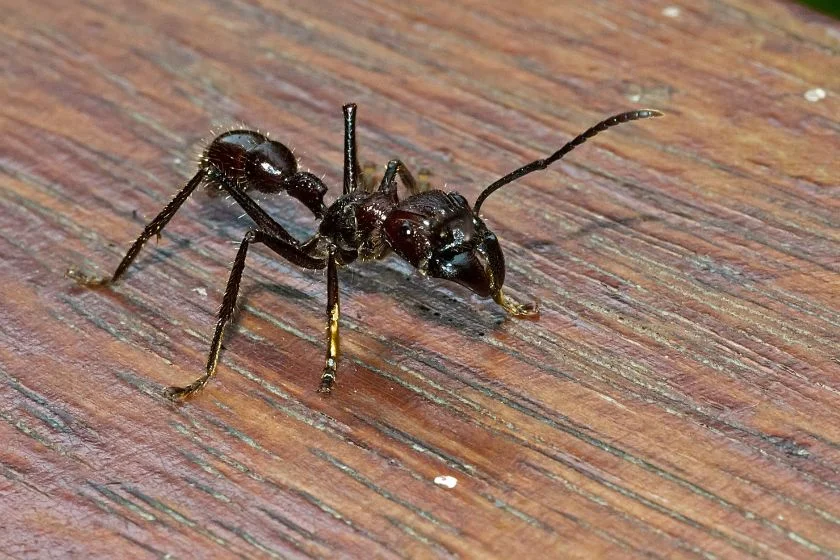
- Scientific Name: Paraponera clavata
- Classification: Insects
- Habitat: Tropical rainforest
- Diet: Omnivores
- Conservation Status: Least Concern
Of all the creatures in Colombia to stay wary of, you may wonder why an ant species is included. Well, this is no ordinary ant.
As its name states, the bullet ant is terribly dangerous for its excruciatingly painful stings and is evaluated to have the maximum Schmidt pain index rating of 4.0+.
Their stings contain poneratoxin, a form of neurotoxin capable of causing paralysis in their victims.
Aside from paralysis, the excruciating stings can last as long as 12 hours. In extreme cases, bullet ants can lead to anaphylactic shock.
The bullet ants are incredibly aggressive, and as you walk through the forest of Colombia, you will come across them as they march in colonies on the forest floor.
A war between rival bullet ant colonies is not uncommon, and it is best never to interfere in these brutal fights.
6. Black Caiman Crocodile
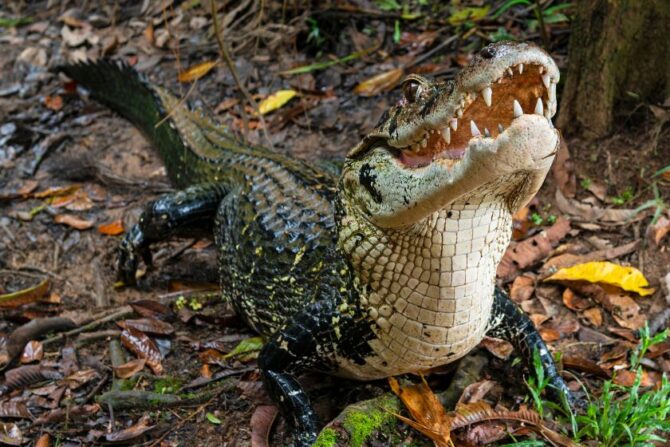
- Scientific Name: Melanosuchus niger
- Classification: Reptiles
- Habitat: Freshwater, stream, lakes, flooded savannah, wetlands
- Diet: Carnivore
- Conservation Status: Conservation Dependent
No other creature rules ferociously over the waters of Colombia than the black caiman crocodile.
With intense strength and impeccable hunting abilities, the black caiman crocodile is extremely dangerous.
They have a length between 16 – 20 feet long and hunt prey mostly on water.
What makes them dangerous is their top-rated predatory instincts, as well as their incredible strength and ability to give deadly bites with their razor-sharp teeth.
Once they trap a prey between their teeth, they crush its bones and drag their prey underwater to drown it.
They are also fearless as they would take on prey of any size and strength and are even known to prey on jaguars that make the unforgivable mistake of hunting in waters home to them.
7. Giant Otter
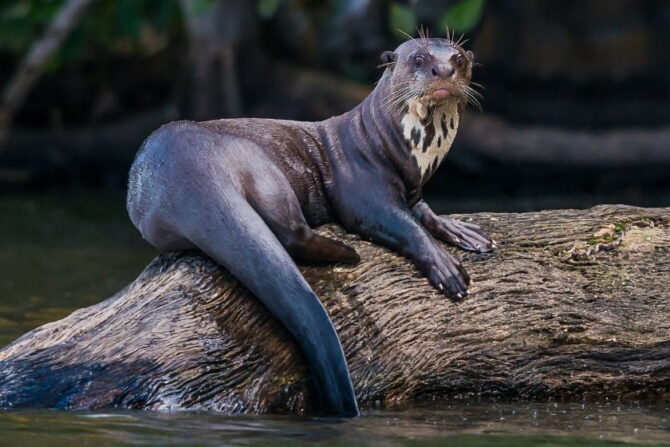
- Scientific Name: Pteronura brasiliensis
- Classification: Mammals
- Habitat: Freshwater rivers, stream
- Diet: Carnivore
- Conservation Status: Endangered
It may seem laughable that the giant otter is included on our list of animals you should fear the most, but these mammals can be very aggressive and fierce.
With the ability to grow as long as 6 feet, and a diet that includes fish, crustaceans, and other small mammals, giant otters have little business that concerns humans.
While they may not be interested in humans, giant otters are incredibly territorial.
They would fight with every strength in their body to defend their territory from intruders, be it humans or other carnivores.
Often, intruders in their territory stand little to no chance as giant otters take opponents not in one-on-one bouts but in groups, making the odds dangerously against the intruder.
With their sharp teeth, they make deadly attacks that can result in deep wounds and injuries.
They are often aggressive to humans, as humans hunt them down for pelts, which has made the species an endangered one.
Hence, it would help if you think twice before going in for a swim in any river in Colombia occupied by giant otters.
Colombia Wildlife Safety Tips
Wear appropriate gears
As you stride through the jungles of Colombia, dressing for the occasion is very important.
Your choice of boots and clothing could be what stands between you and a bullet ant or a wandering spider’s sting.
Hence it is of great importance that you dress appropriately as you journey through the jungles of Colombia.
Adhere to All Instructions
As your tour guide takes you through the various natural habitat of Colombia’s wildlife, a good thumb rule is to adhere to all instructions given by the guide.
These instructions are for your safety, and non-compliance can result in critical damage to you and others in your company.
Do not feed wildlife
A good thumb rule when you visit the home of wildlife is to refrain from feeding the animals, no matter how adorable they may seem.
This is to not send the wrong message to these animals, who would view humans as a food source and may lead to scratches and nips as they approach humans for food.
Keep your distance
Stay as much as 50 yards from wildlife. The human presence is foreign to most wildlife, and when you get close to them, they may react aggressively.
Hence it is best you observe animals at a safe distance, away from their homes.
This would prevent any attack on you from territorial animals as you would not be intruding.
Keep your flashlights off
Due to the excitement of seeing a close-up view of a wild animal, you might want to take pictures and record videos of the moment.
While taking pictures, never forget to turn off your camera or mobile phone’s flashlight.
This is because the flashlight scares wildlife, and seeing one might lead to a violent reaction and cause them to attack.
Before you go on a safari in Colombia, make sure your flashlights are off, as they might save your life.
Conclusion
Colombia’s wildlife is one of the most beautiful sights in the country.
Admiring her sights can be rewarding and fulfilling only if they are done according to the guideline set by local laws and parks.
Do well to adhere to these instructions and avoid these most dangerous animals in Colombia.
They can be the difference between an adventurous trip or a distasteful one.

